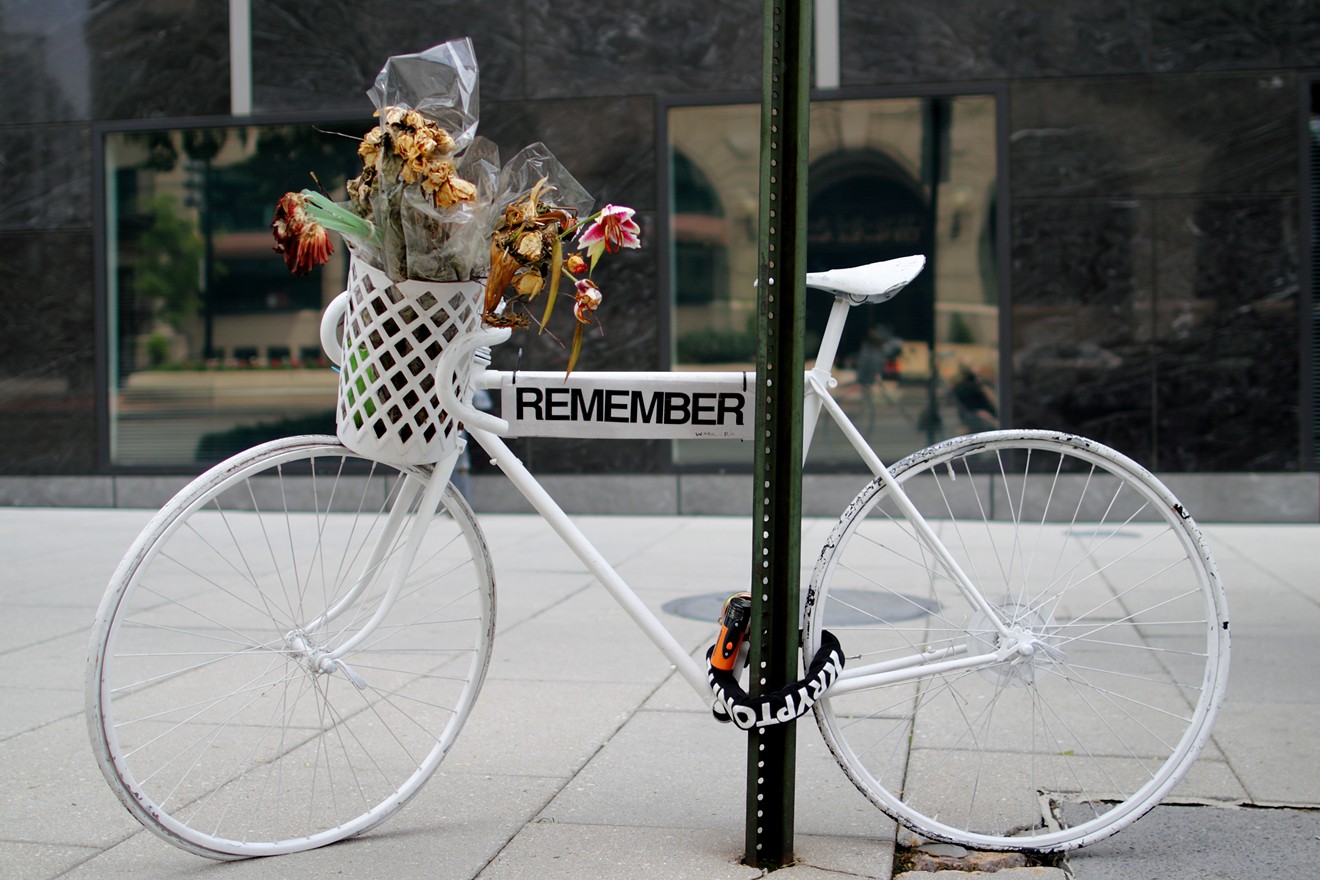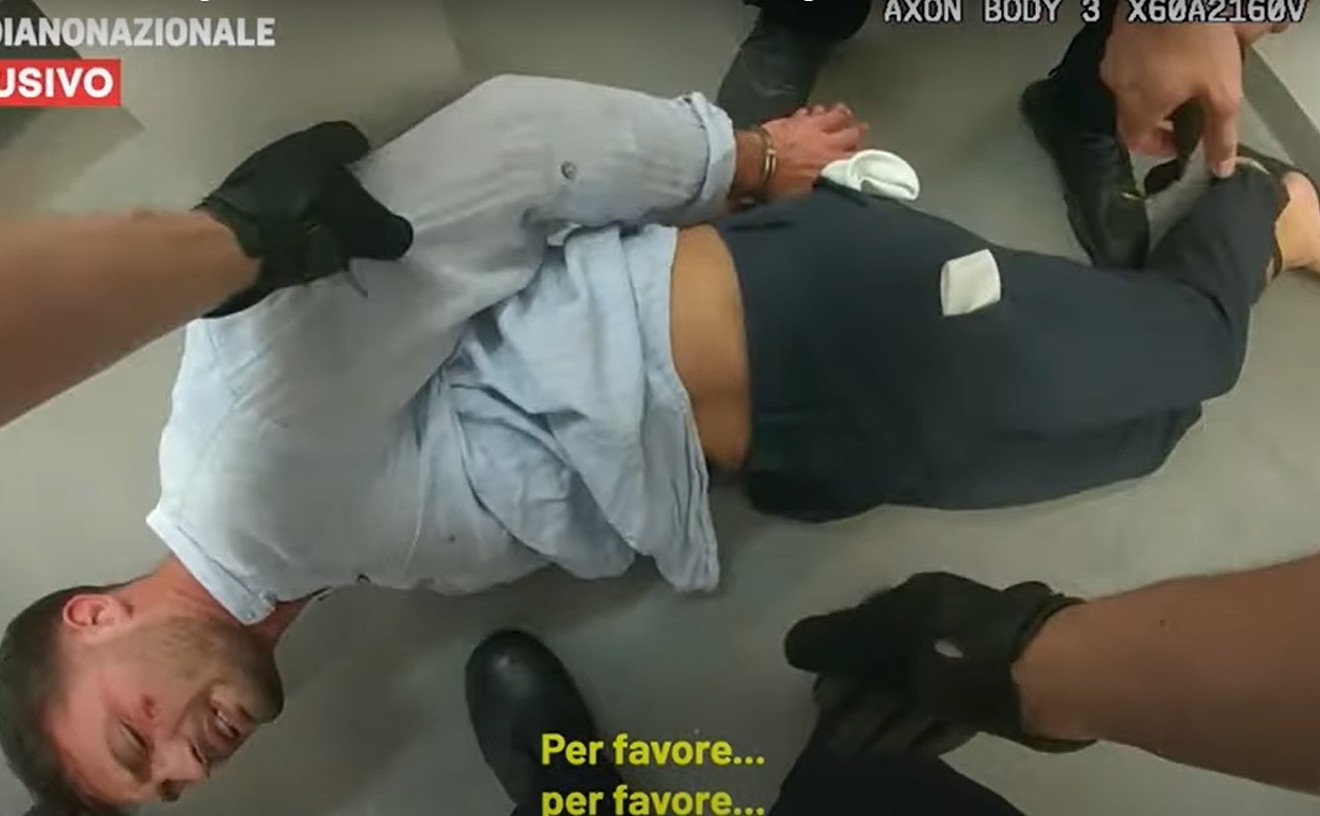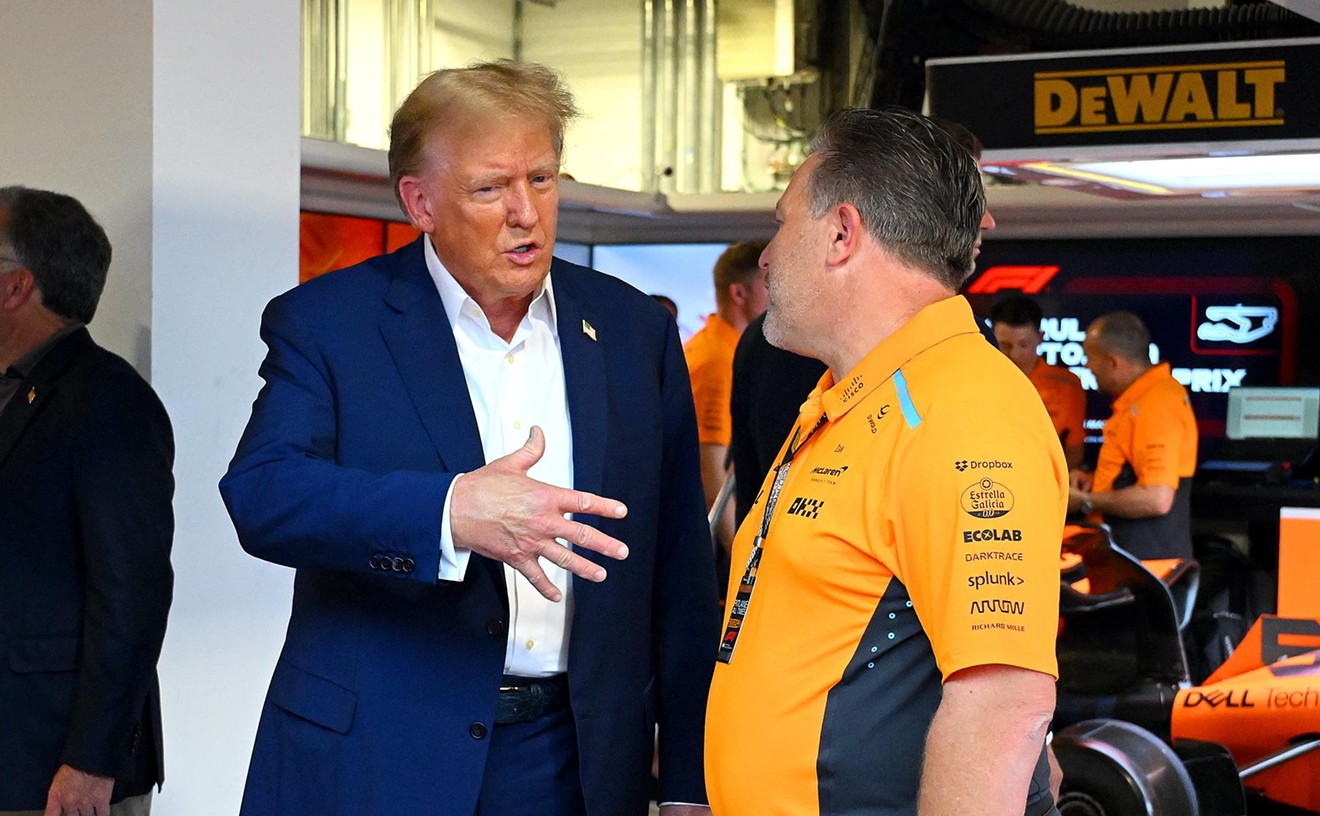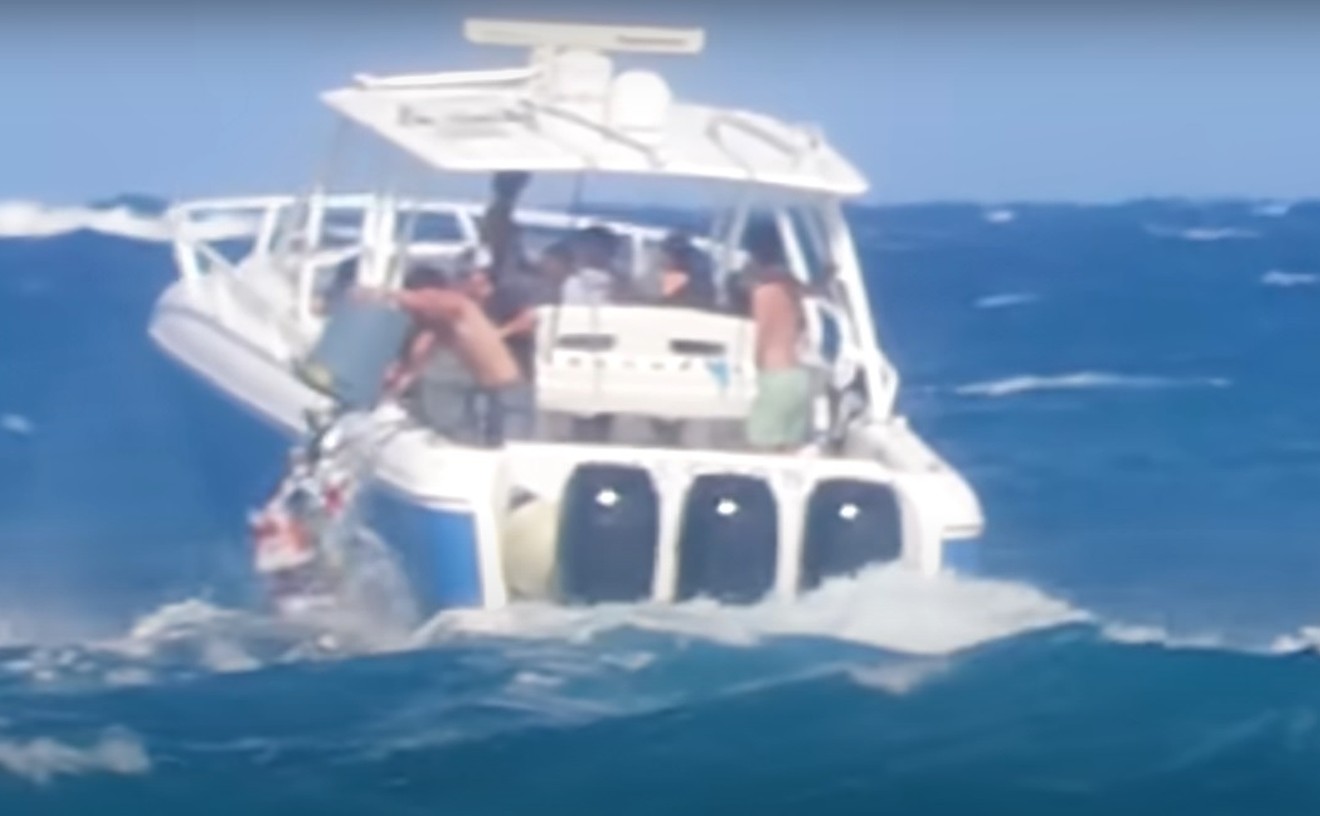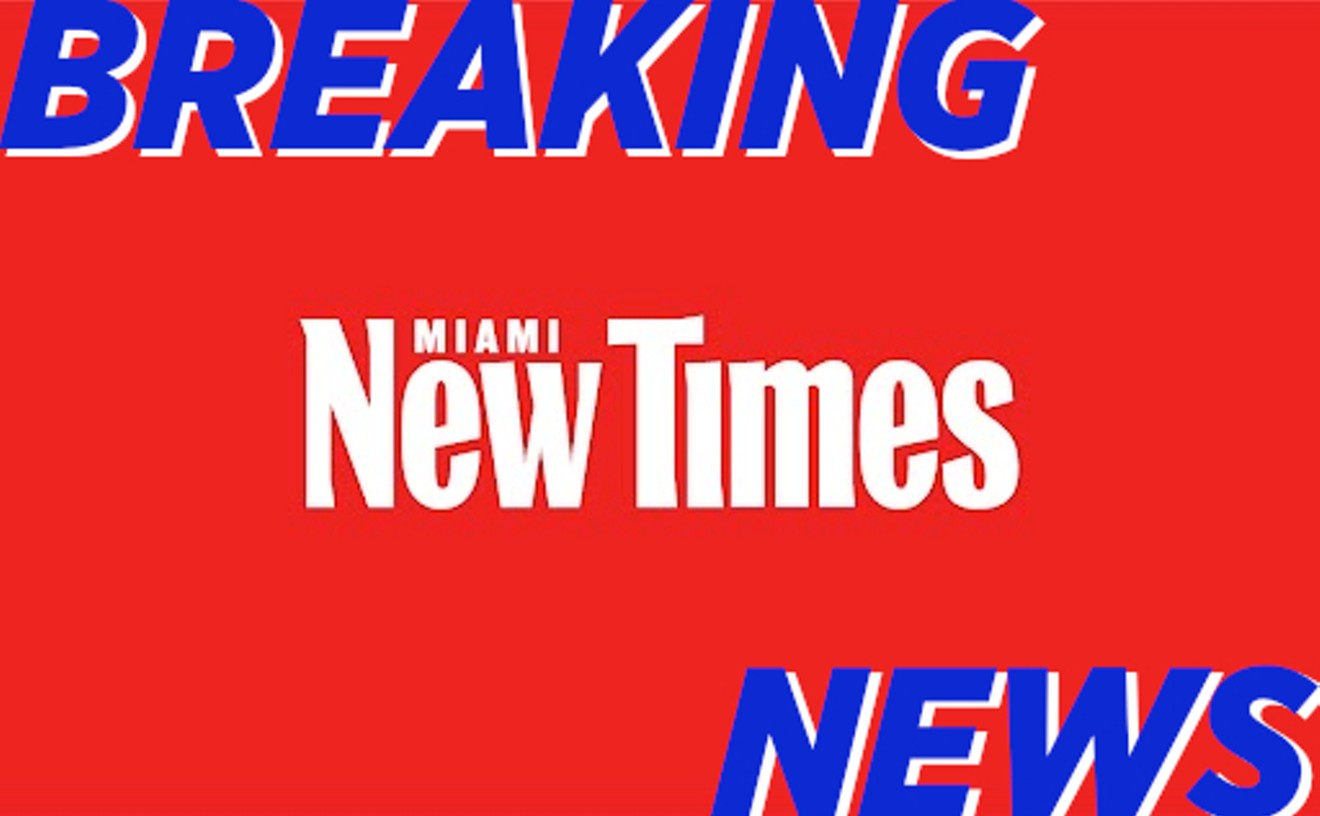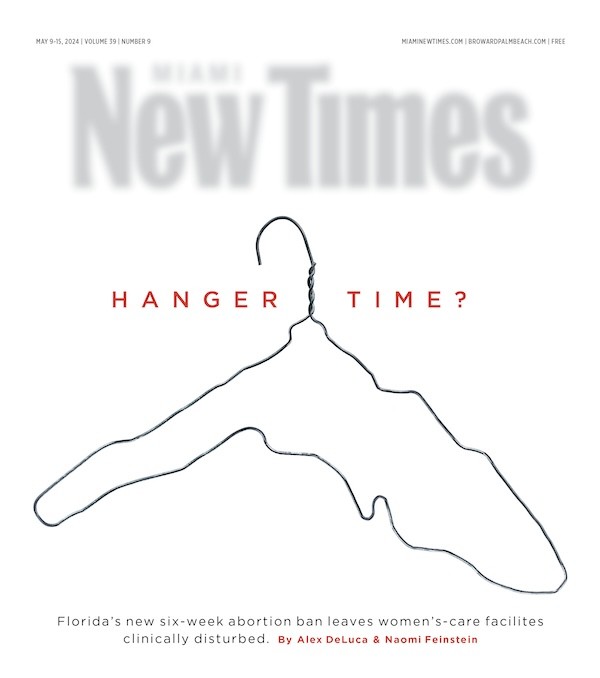Update, noon: This morning, motorcyclist Kadel Piedrahita was arrested by Miami Police in connection with the shooting death of Alex Palencia, according to the Miami Herald. Piedrahita faces charges of second-degree murder and aggravated assault.
It's not enough that cyclists in Miami must contend with hostile, aggressive drivers and roadways that are dangerous by design. Apparently, now cyclists have to dodge bullets too.
Alex Palencia was among a group of cyclists out for an early-morning ride Wednesday when he was fatally shot by a motorcyclist after an altercation. According to Miami Police, Palencia was headed west on the Rickenbacker Causeway when the motorcyclist, identified as Kadel Piedrahita, approached the peloton while traveling in the same direction. Piedrahita was live-streaming on Facebook when the incident occurred. In the video, he appears to shove Palencia while yelling obscenities. The two men then set down their bikes and begin arguing. Another video, filmed by a bystander, shows the fatal gunshot moments later.
The reason for the altercation remains unknown, but investigators have determined there was an outstanding beef between the two men; other cyclists said Piedrahita had previously threatened Palencia. Piedrahita was questioned by police following the shooting but has not been charged.
For cycling enthusiasts and advocates such as Eli Stiers, the news is alarming nonetheless. Stiers, a local attorney who has made waves in Miami by lobbying for safer conditions for cyclists, was stuck in traffic on the Rickenbacker when the incident occurred.
"Unfortunately, I immediately suspected that the roads were closed due to a cycling accident," he tells New Times. "That tells you all you need to know about the unfortunate state of affairs for pedestrians and cyclists in Miami-Dade County." (This past weekend, another cyclist was killed, in a hit-and-run crash on the MacArthur Causeway.)
Recent data shows cycling injuries and fatalities continue to plague Miami, which is symptomatic of a much larger problem. A report from the National Highway Traffic Safety Administration indicates Florida is by far the most dangerous state in the nation for cyclists, with Louisiana a distant second. Miami ranks as the fourth deadliest city, after Tampa-St. Pete, Jacksonville, and Orlando.
In this case, the irony is that the Rickenbacker Causeway has become one of the safest places to ride in Miami-Dade County thanks to a number of protections that were put in place on Key Biscayne. The county installed rumble strips — a vibrating paint that acts as a barrier between the bike lane and vehicular traffic — but, regrettably, Stiers says it took the deaths of several cyclists to persuade the county to act.
The rumble strips were a welcomed improvement, but the cycling community is still pushing further to guarantee safer conditions. Their primary goal is protected bike lanes — that is, a protective barrier that would physically separate motor vehicle traffic from bike traffic on high-speed roads.
The cycling community favors the Plan Z proposal, which would repurpose some of the green space and existing asphalt along the Rickenbacker Causeway for a linear park and protected bike lane. It would be safer not only for cyclists but also for motorists, Stiers contends.
Another popular proposal is the Miami Loop, an envisioned 225-mile network uniting all of the various trails into one cohesive system that would encircle the entire city of Miami. Its layout would connect Plan Z with the Underline, Atlantic Greenway, Flagler Trail, Krome Path, and others.
"I've been leading the charge as the attorney lobbying for that," Stiers says. "It's gonna take some time, but we'll get there. I remember when the Underline was considered a pie in the sky, but now they're building it."
Though the recent incident on the Rickenbacker might have been a one-off involving a personal dispute between the two men involved, it still calls attention to the danger cyclists face in Miami-Dade every day.
"We want physical protection for all of these high-speed thoroughfares where cars are going 60, 70, or 80 miles per hour right next to bike lanes," Stiers says. "It’s scary out there."
[
{
"name": "Air - MediumRectangle - Inline Content - Mobile Display Size",
"component": "19274298",
"insertPoint": "2",
"requiredCountToDisplay": "2"
},{
"name": "Editor Picks",
"component": "17482312",
"insertPoint": "4",
"requiredCountToDisplay": "1"
},{
"name": "Inline Links",
"component": "18711090",
"insertPoint": "8th",
"startingPoint": 8,
"requiredCountToDisplay": "7",
"maxInsertions": 25
},{
"name": "Air - MediumRectangle - Combo - Inline Content",
"component": "17482310",
"insertPoint": "8th",
"startingPoint": 8,
"requiredCountToDisplay": "7",
"maxInsertions": 25
},{
"name": "Inline Links",
"component": "18711090",
"insertPoint": "8th",
"startingPoint": 12,
"requiredCountToDisplay": "11",
"maxInsertions": 25
},{
"name": "Air - Leaderboard Tower - Combo - Inline Content",
"component": "17482313",
"insertPoint": "8th",
"startingPoint": 12,
"requiredCountToDisplay": "11",
"maxInsertions": 25
}
]

